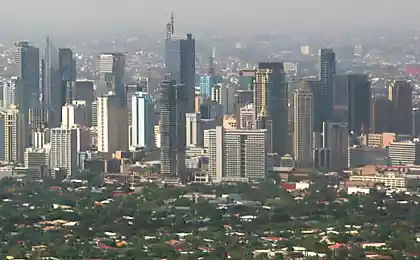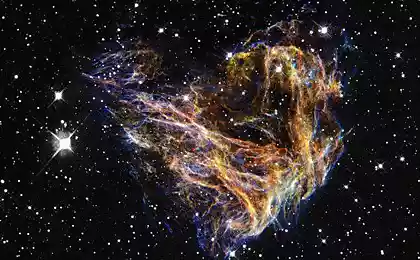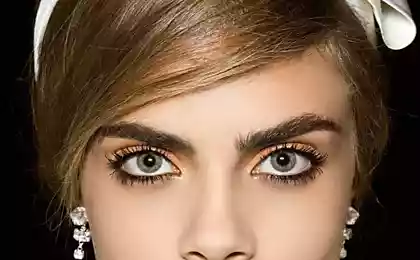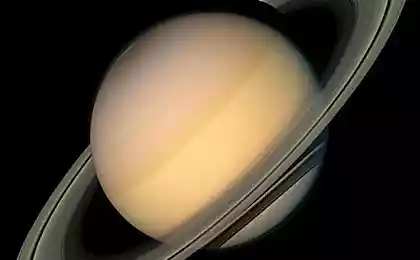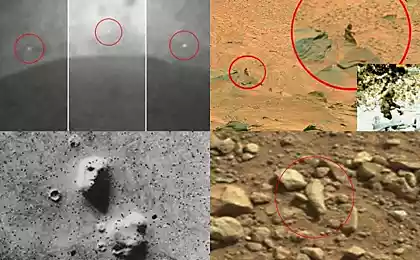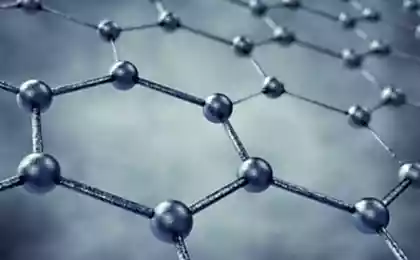1518
Strange and rare animals on our planet
All these animals are real.
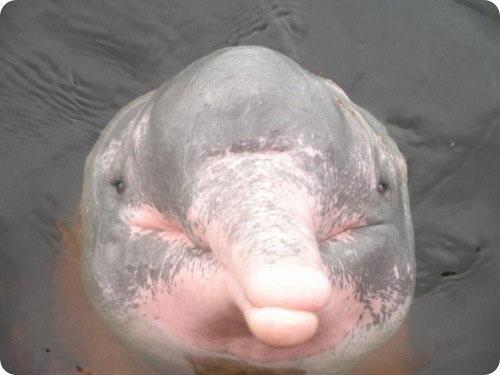
Amazon River Dolphin. It is the largest river dolphin. Inia geoffrensis, as the scientists call it, reaches 2, 5 m in length and weight of 2 kilograms. Light gray juveniles lighter with age. The body of the Amazon River Dolphin complete, with a thin tail and narrow muzzle. Round forehead, slightly curved beak and small eyes - features of the species of dolphins. Amazon River Dolphin is found in rivers and lakes in Latin America.
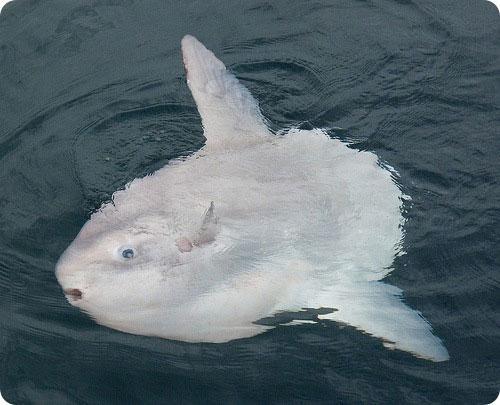
Sunfish, or Mola MALL. This fish may have a length of three meters and weigh about one and a half tons. The biggest instance of fish-moon was caught in New Hampshire, USA. Its length is five and a half meters, the missing data by weight. The shape of the body of the fish resembles a disk, it is this feature gave rise to the Latin name. A fish-moon skin has a large thickness. It is flexible, and its surface is covered with small bony prominences.
The larvae of the species and fish juveniles float conventional manner. Adults large fish swim on his side, quietly moving fins. They seem to lie on the surface of the water, where they are very easy to spot and catch. However, many experts believe that the float so that only the sick fish. As an argument, they cite the fact that the stomach had caught on the surface of the fish are usually empty

TASMANIAN DEVIL. The world's largest carnivorous marsupial of modern, this animal black color with white spots on the chest and rump, with a huge mouth and sharp teeth has a stocky build and harsh temper, for which, in fact, has been called the devil. In issuing ominous cries at night, a massive and clumsy Tasmanian devil resembles a small bear: forelegs slightly longer back, a large head, blunt snout.

LORI or lemurs. A characteristic feature of Lori - the large size of the eye, which may edging dark circles, between the eyes has white dividing strip. Lori muzzle can be compared with a clown mask. This is most likely due to the name of an animal: Loeris means "clown»
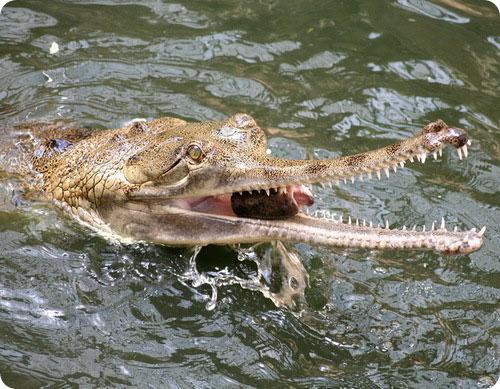
Gharial. Of course, one of the members of the order of crocodiles. With age, the face becomes even gharial narrower and longer. Due to the fact that the fish eats gavial, his teeth are long and sharp disposed with a slight slope for convenience meals.

Okapi, aka FOREST GIRAFFE. Traveling through Central Africa, a journalist and explorer of Africa, Henry Morton Stanley (1841-1904) has repeatedly faced with the local Aboriginal people. Faced once the expedition, equipped with horses, the natives of the Congo told the famous traveler, they are found in the jungle of wild beasts, very similar to his horses. Much-traveled Englishman was somewhat puzzled by this fact.
After some negotiations in 1900, the British were finally able to buy a part of the skin of the mysterious beast of the local population and send them to the Royal Zoological Society of London, where the unknown animal was given the name "Horse Johnston» (Equus johnstoni), that is determined his family horse . But what was their surprise when, a year later managed to get the whole skin and two skulls of an unknown beast, and found that it's more like a pygmy giraffe ice age. Only in 1909 was able to catch a live specimen Okapi.
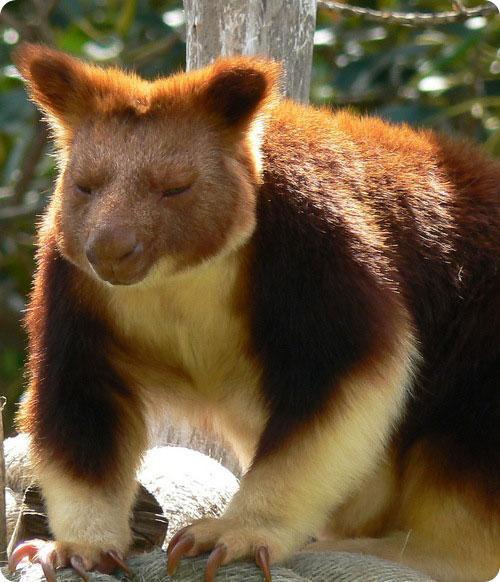
VALABI or tree kangaroo. The genus tree kangaroos - Wallaby (Dendrolagus) include 6 species. Among them are found in New Guinea D. Inustus or bearish wallabies, D. Matschiei or wallabies Matchish having subspecies D. Goodfellowi (wallabies Goodfellow), D. Dorianus - wallaby Doria. The Australian Queensland are found D. Lumholtzi - Wallaby Lumgoltsa (bungari), D. Bennettianus - Bennett wallaby, or tharibina.
The original habitat was New Guinea, but now wallabies are found in Australia. Wood kangaroos live in the tropical forests of mountain, at an altitude of 450 to 3000m. above sea level. Size of the animal 52-81 cm and a tail length of 42 to 93 cm. Wallaby weigh, depending on the species, 7, 7 to 10 kg male and 6, 7, 8, 9 kg. females.
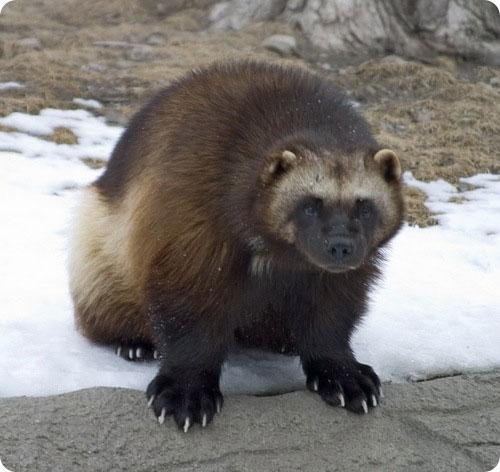
Wolverine. It moves quickly and deftly. The animal elongated snout, head is large, rounded ears. Jaws strong, teeth are sharp. Wolverine - "MEGAPODE" beast foot disproportionate relative to the body, but their size allows to move freely through the deep snow cover. On each leg, and huge curved claws. Wolverine perfectly climbs trees has keen eyesight. Voice like a fox. (Hugh Jackman And it is not like anyway)

Foss. On the island of Madagascar have survived such animals that are not not only in Africa but throughout the rest of the world. One of the rarest animals is Voss - the only member of the genus Cryptoprocta and the largest carnivorous mammal that lives on the island of Madagascar. Exterior Foss little unusual: it is a cross between a puma and a small civets.
Sometimes called Foss and Madagascan lion, as the ancestors of this animal were much larger and reached the size of a lion. Voss has a squat, massive and slightly elongated body, the length of which can reach up to 80 cm (at an average of 65-70 cm). Paws at Foss long, but thick enough, the hind legs higher than the front. The tail is often equal to the length of the body and reaches up to 65 cm.
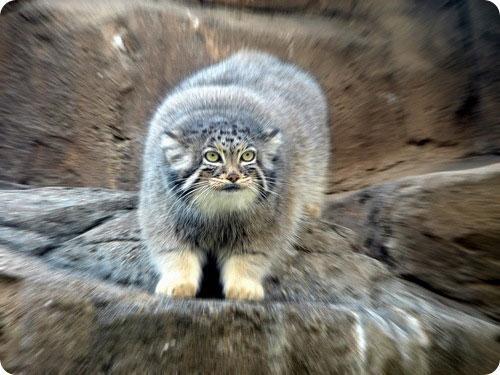
MANUL. Pat!
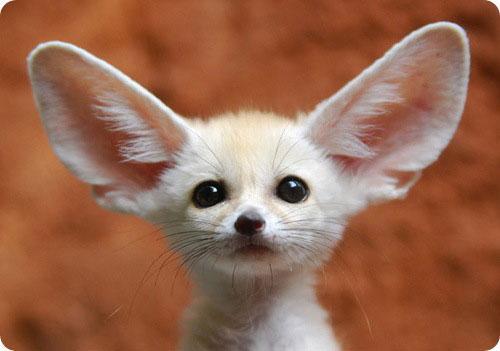
Fenech STEPPE or chanterelles. Same wombats - without this selection will not be fully in line with the title
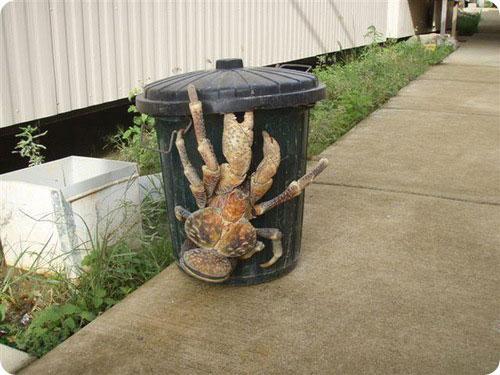
Coconut crab. The representative of decapod crustaceans. Which is the habitat of the western tropical Pacific and Indian Ocean islands. This animal from the family land crabs large enough for its kind. The body reaches adult size up to 32 cm and a weight of 3 to 4 kg. For a long time mistakenly believe that their claws he can even split the coconuts that after eating.
To date, scientists have proved that cancer can only eat already chopped coconuts. They, being its main source of food, and gave the name of the coconut crab. Although he is not averse to eat and other types of food - fruits of plants Pandanus, organic matter from the soil, and even their own kind.
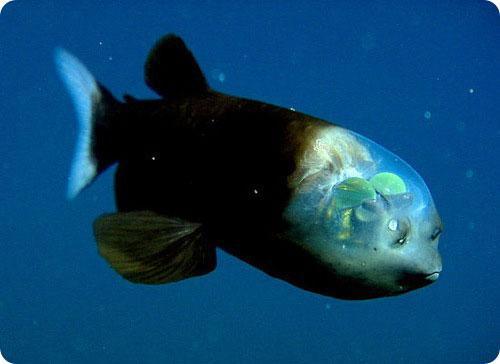
The name of this fish in Latin sounds too boring, because it is easier to call FISH with a transparent head. She has a clear head, through which she can see its tubular eyes. The head, through which the fish watching for prey, helps protect the eye. First opened in 1939. It lives at a much greater depth, therefore not fully been studied.
In particular, it is not obvious was the principle of the fish. I believe that it should feel very great difficulties due to the fact that it can only look up. Only in 2009 was fully investigated the structure of the eye of the fish. Apparently when trying to study it before the fish just could not stand the pressure change.
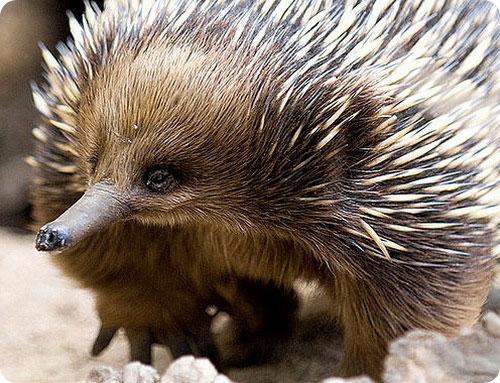
Echidnas. Where did without it.

SMALL RED PANDA. Today the red pandas in their natural habitat can be found only in the mountainous bamboo forests China's Yunnan Province and Sichuan, northern Burma, Bhutan, Nepal and the northeast of India.
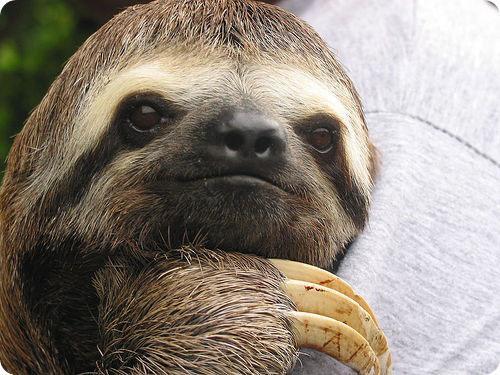
Sloth. A very interesting species of mammals, has a number of distinctive features that make it unlike any other existing view. He lived mostly in Central and South America.
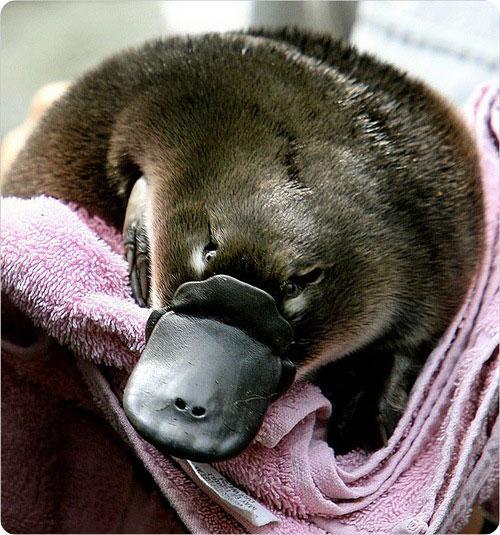
UTKONOS. In principle, all known. But this picture deserves attention
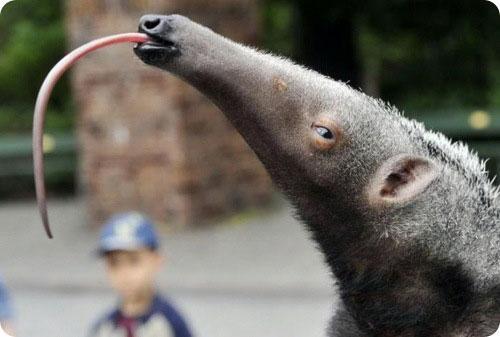
Aardvark. Also no surprise. But a great frame
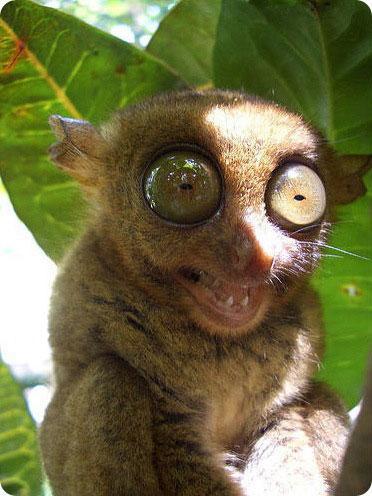
Tarsier. A small mammal of the order primates, very specific appearance is created around this small animal weighing up to one hundred and sixty grams more sinister aura. Thus, indigenous peoples of Indonesia and the Philippines tied ridiculous appearance tarsier with the antics of evil spirits. However, many of our contemporaries, who first see the tarsiers in its native habitat, are amazed by its nonstandard appearance
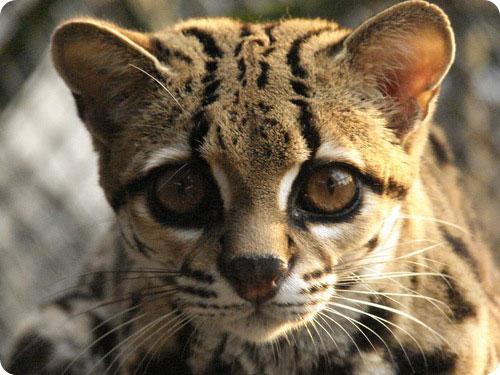
Margao. From the "family" of these wild cats vary in size and proportions of the body, as well as lifestyle. For example, Margao is very similar to its closest relative - ocelot, which, moreover, often occurs in the same place where dwells Margao. The difference between these cats is simple - the ocelot much larger, since prefers to hunt on the ground, Margao has longer legs and tail, mainly due to the life of the trees
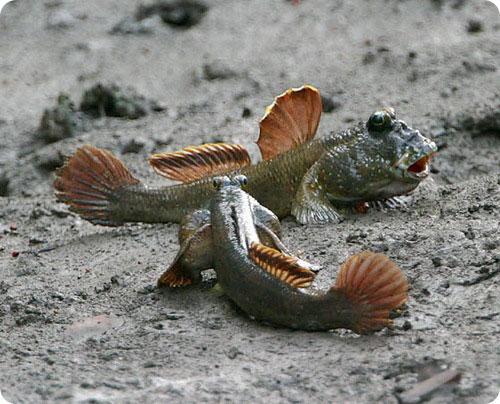
Mudskipper. It is found in intertidal areas and in areas such as tropical wetlands, resulting in areas of mangrove habitat. Especially mudskipper like to settle in places where fresh water meets the sea. Although from a scientific point of view, this fish, many perceive them as amphibians. Well, in a sense, the way it is.
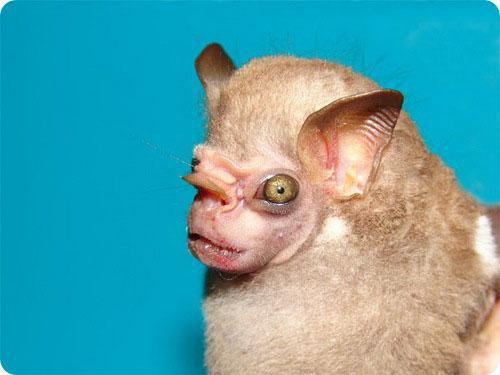
DRACULA herbivores. Bats («Sphaeronycteris toxophyllum» lat.) This species lives in the north of South America (the Amazon basin and the mountains). These bats, oddly enough, are herbivores.
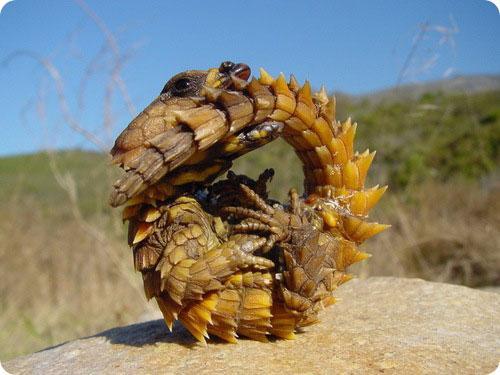
Cordylidae. Habitat cordylidae covers rocky regions of Africa, with a dry climate, mainly on the southern side of the Sahara. In addition, a certain amount cordylidae inhabit and Madagascar. Cordylidae there are more than forty species. Dimensions cordylidae quite different and range from 12 to 70 centimeters in length. The entire body is covered with rectangular plates cordylidae - scales that cover the bone foundation reptile
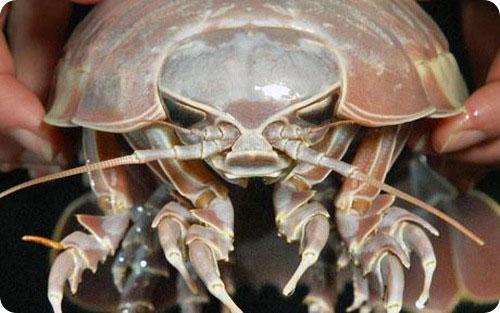
Isopods. Giant isopods woodlice a length of about 30 cm live in water depths of about 1, 6 km
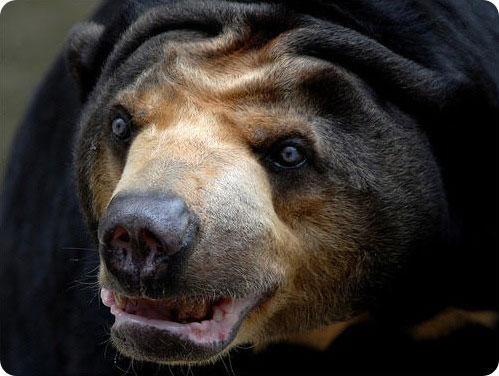
SUN BEAR. Malay bear biruang, or, as it is called because of the characteristic color, sunlight or honey bear, lives in India, Myanmar, as well as on the islands of Borneo, Java and Sumatra. It is large enough interest to zoologists, and for nature lovers, since this species is the most short stature, the most aggressive and the most representative of all small indigenous family bear. By the way, just a small number of this kind of threatening and caused biruang entering into the Red Book.
Adult sunny Bear has a very difficult character. However, quite a lot of interest in his person is not called its habitat, and not character and stunning looks, which immediately catches the eye from any photo
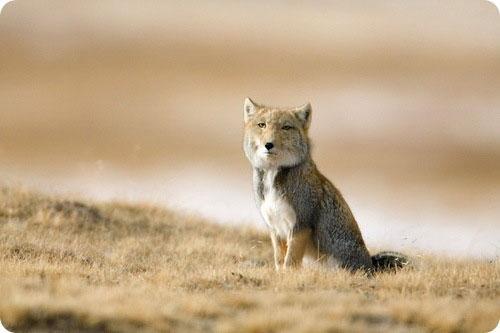
TIBETAN FOX. Found in Tibet in the north-western India and northern Nepal, at high altitude.
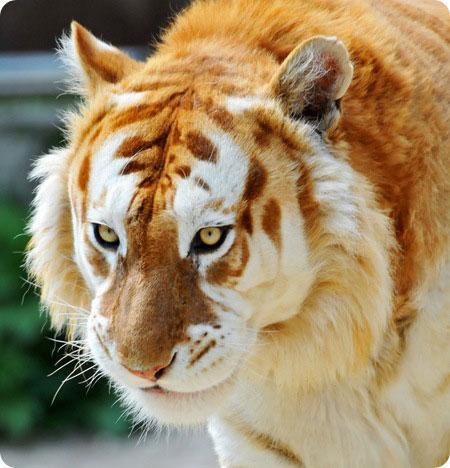
Golden Tiger. That is called the Tigers with a similar color. The reason for the unusual colors - "did not work" one of the genes. Think like an albino.

RUKONOZHKA or ay-ay. Rukonozhka Madagascar or "ah-ah", suborder prosimians mammal; the only representative of the family rukonozhek. The body length of 40 cm, 60 cm tail. The head is large, the muzzle is short; the ears are large, leathery. The tail is bushy. Coat color from dark brown to black.

Lamprey. Kind, endangered. It reaches a length of 120 cm and a weight of 3 kg. It spawns in June and early July in the rivers. The male builds a nest with a diameter of about 50 cm and his guards. After spawning manufacturers die. The larvae live in the river 5-6 years, after metamorphosis, young lampreys falling into the sea, marine period of about 3 years. At sea, they stick to fish (external parasites of larger fish) - cod, flounder, and so on. D.

Star-nosed mole. Insectivorous mammal of the family of mole. Externally, the star-nosed mole is different from the other members of the family and other small animals only his peculiar structure of the stigma in a rosette or star of 22 soft fleshy movable bare beams. In size, shovel forelegs, thick, velvety fur (black or dark brown) similar to the European mole.

Amazon River Dolphin. It is the largest river dolphin. Inia geoffrensis, as the scientists call it, reaches 2, 5 m in length and weight of 2 kilograms. Light gray juveniles lighter with age. The body of the Amazon River Dolphin complete, with a thin tail and narrow muzzle. Round forehead, slightly curved beak and small eyes - features of the species of dolphins. Amazon River Dolphin is found in rivers and lakes in Latin America.

Sunfish, or Mola MALL. This fish may have a length of three meters and weigh about one and a half tons. The biggest instance of fish-moon was caught in New Hampshire, USA. Its length is five and a half meters, the missing data by weight. The shape of the body of the fish resembles a disk, it is this feature gave rise to the Latin name. A fish-moon skin has a large thickness. It is flexible, and its surface is covered with small bony prominences.
The larvae of the species and fish juveniles float conventional manner. Adults large fish swim on his side, quietly moving fins. They seem to lie on the surface of the water, where they are very easy to spot and catch. However, many experts believe that the float so that only the sick fish. As an argument, they cite the fact that the stomach had caught on the surface of the fish are usually empty

TASMANIAN DEVIL. The world's largest carnivorous marsupial of modern, this animal black color with white spots on the chest and rump, with a huge mouth and sharp teeth has a stocky build and harsh temper, for which, in fact, has been called the devil. In issuing ominous cries at night, a massive and clumsy Tasmanian devil resembles a small bear: forelegs slightly longer back, a large head, blunt snout.

LORI or lemurs. A characteristic feature of Lori - the large size of the eye, which may edging dark circles, between the eyes has white dividing strip. Lori muzzle can be compared with a clown mask. This is most likely due to the name of an animal: Loeris means "clown»

Gharial. Of course, one of the members of the order of crocodiles. With age, the face becomes even gharial narrower and longer. Due to the fact that the fish eats gavial, his teeth are long and sharp disposed with a slight slope for convenience meals.

Okapi, aka FOREST GIRAFFE. Traveling through Central Africa, a journalist and explorer of Africa, Henry Morton Stanley (1841-1904) has repeatedly faced with the local Aboriginal people. Faced once the expedition, equipped with horses, the natives of the Congo told the famous traveler, they are found in the jungle of wild beasts, very similar to his horses. Much-traveled Englishman was somewhat puzzled by this fact.
After some negotiations in 1900, the British were finally able to buy a part of the skin of the mysterious beast of the local population and send them to the Royal Zoological Society of London, where the unknown animal was given the name "Horse Johnston» (Equus johnstoni), that is determined his family horse . But what was their surprise when, a year later managed to get the whole skin and two skulls of an unknown beast, and found that it's more like a pygmy giraffe ice age. Only in 1909 was able to catch a live specimen Okapi.

VALABI or tree kangaroo. The genus tree kangaroos - Wallaby (Dendrolagus) include 6 species. Among them are found in New Guinea D. Inustus or bearish wallabies, D. Matschiei or wallabies Matchish having subspecies D. Goodfellowi (wallabies Goodfellow), D. Dorianus - wallaby Doria. The Australian Queensland are found D. Lumholtzi - Wallaby Lumgoltsa (bungari), D. Bennettianus - Bennett wallaby, or tharibina.
The original habitat was New Guinea, but now wallabies are found in Australia. Wood kangaroos live in the tropical forests of mountain, at an altitude of 450 to 3000m. above sea level. Size of the animal 52-81 cm and a tail length of 42 to 93 cm. Wallaby weigh, depending on the species, 7, 7 to 10 kg male and 6, 7, 8, 9 kg. females.

Wolverine. It moves quickly and deftly. The animal elongated snout, head is large, rounded ears. Jaws strong, teeth are sharp. Wolverine - "MEGAPODE" beast foot disproportionate relative to the body, but their size allows to move freely through the deep snow cover. On each leg, and huge curved claws. Wolverine perfectly climbs trees has keen eyesight. Voice like a fox. (Hugh Jackman And it is not like anyway)

Foss. On the island of Madagascar have survived such animals that are not not only in Africa but throughout the rest of the world. One of the rarest animals is Voss - the only member of the genus Cryptoprocta and the largest carnivorous mammal that lives on the island of Madagascar. Exterior Foss little unusual: it is a cross between a puma and a small civets.
Sometimes called Foss and Madagascan lion, as the ancestors of this animal were much larger and reached the size of a lion. Voss has a squat, massive and slightly elongated body, the length of which can reach up to 80 cm (at an average of 65-70 cm). Paws at Foss long, but thick enough, the hind legs higher than the front. The tail is often equal to the length of the body and reaches up to 65 cm.

MANUL. Pat!

Fenech STEPPE or chanterelles. Same wombats - without this selection will not be fully in line with the title

Coconut crab. The representative of decapod crustaceans. Which is the habitat of the western tropical Pacific and Indian Ocean islands. This animal from the family land crabs large enough for its kind. The body reaches adult size up to 32 cm and a weight of 3 to 4 kg. For a long time mistakenly believe that their claws he can even split the coconuts that after eating.
To date, scientists have proved that cancer can only eat already chopped coconuts. They, being its main source of food, and gave the name of the coconut crab. Although he is not averse to eat and other types of food - fruits of plants Pandanus, organic matter from the soil, and even their own kind.

The name of this fish in Latin sounds too boring, because it is easier to call FISH with a transparent head. She has a clear head, through which she can see its tubular eyes. The head, through which the fish watching for prey, helps protect the eye. First opened in 1939. It lives at a much greater depth, therefore not fully been studied.
In particular, it is not obvious was the principle of the fish. I believe that it should feel very great difficulties due to the fact that it can only look up. Only in 2009 was fully investigated the structure of the eye of the fish. Apparently when trying to study it before the fish just could not stand the pressure change.

Echidnas. Where did without it.

SMALL RED PANDA. Today the red pandas in their natural habitat can be found only in the mountainous bamboo forests China's Yunnan Province and Sichuan, northern Burma, Bhutan, Nepal and the northeast of India.

Sloth. A very interesting species of mammals, has a number of distinctive features that make it unlike any other existing view. He lived mostly in Central and South America.

UTKONOS. In principle, all known. But this picture deserves attention

Aardvark. Also no surprise. But a great frame

Tarsier. A small mammal of the order primates, very specific appearance is created around this small animal weighing up to one hundred and sixty grams more sinister aura. Thus, indigenous peoples of Indonesia and the Philippines tied ridiculous appearance tarsier with the antics of evil spirits. However, many of our contemporaries, who first see the tarsiers in its native habitat, are amazed by its nonstandard appearance

Margao. From the "family" of these wild cats vary in size and proportions of the body, as well as lifestyle. For example, Margao is very similar to its closest relative - ocelot, which, moreover, often occurs in the same place where dwells Margao. The difference between these cats is simple - the ocelot much larger, since prefers to hunt on the ground, Margao has longer legs and tail, mainly due to the life of the trees

Mudskipper. It is found in intertidal areas and in areas such as tropical wetlands, resulting in areas of mangrove habitat. Especially mudskipper like to settle in places where fresh water meets the sea. Although from a scientific point of view, this fish, many perceive them as amphibians. Well, in a sense, the way it is.

DRACULA herbivores. Bats («Sphaeronycteris toxophyllum» lat.) This species lives in the north of South America (the Amazon basin and the mountains). These bats, oddly enough, are herbivores.

Cordylidae. Habitat cordylidae covers rocky regions of Africa, with a dry climate, mainly on the southern side of the Sahara. In addition, a certain amount cordylidae inhabit and Madagascar. Cordylidae there are more than forty species. Dimensions cordylidae quite different and range from 12 to 70 centimeters in length. The entire body is covered with rectangular plates cordylidae - scales that cover the bone foundation reptile

Isopods. Giant isopods woodlice a length of about 30 cm live in water depths of about 1, 6 km

SUN BEAR. Malay bear biruang, or, as it is called because of the characteristic color, sunlight or honey bear, lives in India, Myanmar, as well as on the islands of Borneo, Java and Sumatra. It is large enough interest to zoologists, and for nature lovers, since this species is the most short stature, the most aggressive and the most representative of all small indigenous family bear. By the way, just a small number of this kind of threatening and caused biruang entering into the Red Book.
Adult sunny Bear has a very difficult character. However, quite a lot of interest in his person is not called its habitat, and not character and stunning looks, which immediately catches the eye from any photo

TIBETAN FOX. Found in Tibet in the north-western India and northern Nepal, at high altitude.

Golden Tiger. That is called the Tigers with a similar color. The reason for the unusual colors - "did not work" one of the genes. Think like an albino.

RUKONOZHKA or ay-ay. Rukonozhka Madagascar or "ah-ah", suborder prosimians mammal; the only representative of the family rukonozhek. The body length of 40 cm, 60 cm tail. The head is large, the muzzle is short; the ears are large, leathery. The tail is bushy. Coat color from dark brown to black.

Lamprey. Kind, endangered. It reaches a length of 120 cm and a weight of 3 kg. It spawns in June and early July in the rivers. The male builds a nest with a diameter of about 50 cm and his guards. After spawning manufacturers die. The larvae live in the river 5-6 years, after metamorphosis, young lampreys falling into the sea, marine period of about 3 years. At sea, they stick to fish (external parasites of larger fish) - cod, flounder, and so on. D.

Star-nosed mole. Insectivorous mammal of the family of mole. Externally, the star-nosed mole is different from the other members of the family and other small animals only his peculiar structure of the stigma in a rosette or star of 22 soft fleshy movable bare beams. In size, shovel forelegs, thick, velvety fur (black or dark brown) similar to the European mole.







